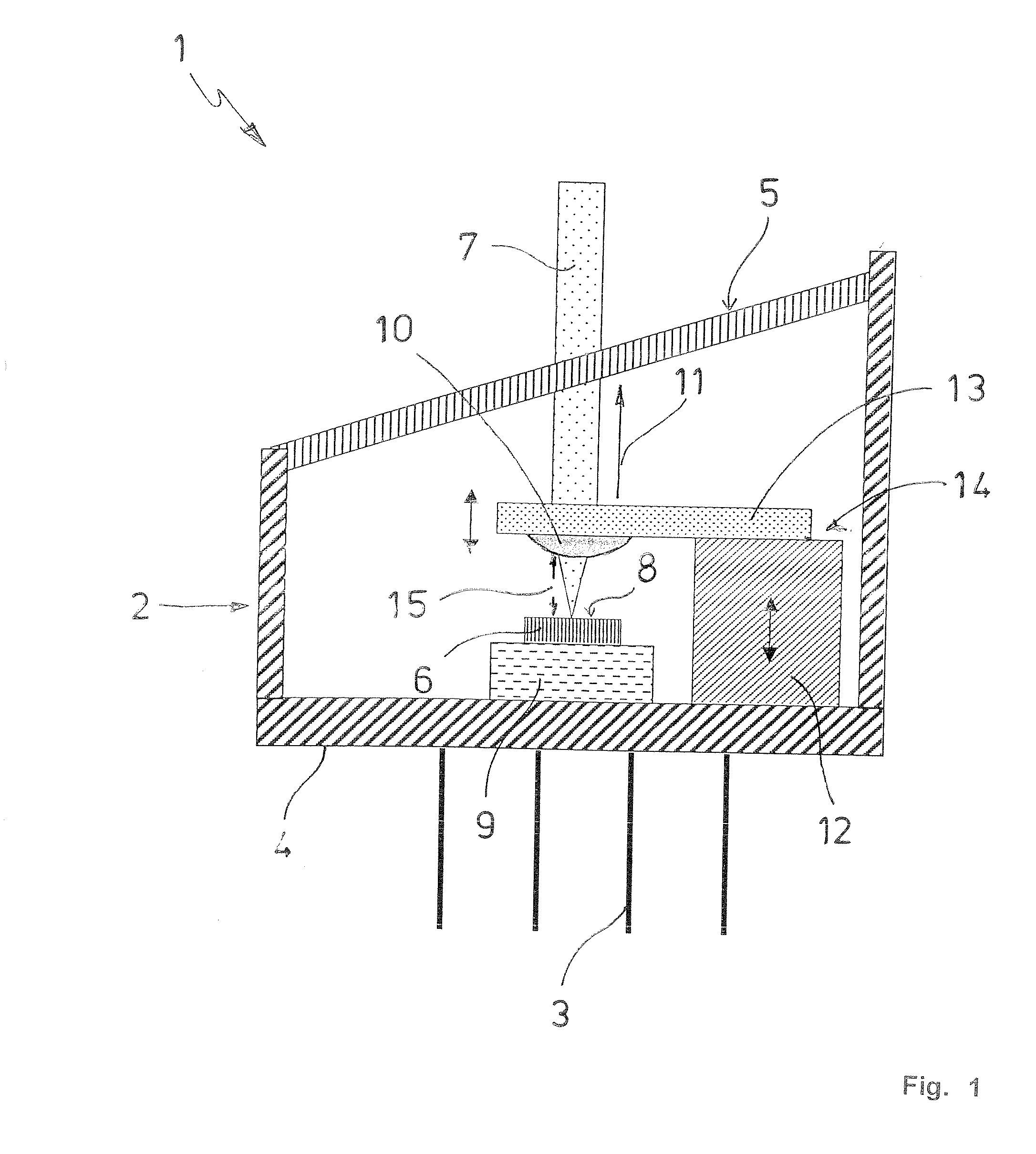Laser diode structure with reduced interference signals
a technology of interference signals and laser diodes, applied in lasers, laser construction details, semiconductor laser optical devices, etc., can solve the problems of optical noise that reduces the signal resolution of high-resolution testing devices, and achieve the effect of improving the resolution of test signals
- Summary
- Abstract
- Description
- Claims
- Application Information
AI Technical Summary
Benefits of technology
Problems solved by technology
Method used
Image
Examples
first embodiment
[0023]FIG. 1 shows a laser diode structure 1 according to the invention, with a hermetically enclosed housing 2 that comprises a number of electrical connections 3 on a housing bottom 4 of the housing 2. Opposite the housing bottom 4, an exit window 5 is provided for the exit from the housing 2 of a laser beam 7 emitted by a laser diode 6. The exit window 5 extends at an angle to the housing bottom 4 of the housing 2 and to a laser aperture 8 of the laser diode 6. The laser diode 6 is mounted on a temperature control device 9 that is formed by a Peltier element. The Peltier element 9 is arranged on the housing bottom 4 and carries the laser diode 6 on a cold flat surface. With its warm flat surface on the opposite side, the Peltier element 9 is connected with the housing bottom 4 in a thermally well-conductive way. In addition, beside the laser diode 6, a thermistor (not shown) that serves as thermal sensor and controls the operating current of the Peltier element may be arranged on...
third embodiment
[0029]FIG. 3 shows the laser diode structure according to the invention. In the laser diode structure 1″ shown here, the collimator lens 10 simultaneously forms the exit window 5 which in this case is arranged parallel to the housing bottom 4 of the housing 2. Like the laser diodes 6 in the laser diode structures 1, 1′, the laser diode 6′ is carried by a temperature control device 9 that is arranged eccentrically on the housing bottom 4. Compared with the laser diodes 6 used in the laser diode structures 1, 1′, the laser diode 6′ has a laser aperture 8 that is provided laterally on the laser diode 6′. After exiting from the laser aperture 8, the laser beam 7 is deflected by a deflecting mirror 17 in the form of a micromirror in the direction of the collimator lens 10.
[0030]On the one hand, the micromirror 17 is swivelably connected to a holder 18 that is attached to the housing bottom 4 next to the temperature control device 9, and, on the other hand, it is connected, at a distance ...
PUM
 Login to View More
Login to View More Abstract
Description
Claims
Application Information
 Login to View More
Login to View More - R&D
- Intellectual Property
- Life Sciences
- Materials
- Tech Scout
- Unparalleled Data Quality
- Higher Quality Content
- 60% Fewer Hallucinations
Browse by: Latest US Patents, China's latest patents, Technical Efficacy Thesaurus, Application Domain, Technology Topic, Popular Technical Reports.
© 2025 PatSnap. All rights reserved.Legal|Privacy policy|Modern Slavery Act Transparency Statement|Sitemap|About US| Contact US: help@patsnap.com



